|
We like choices, right? At any given coffee shop, you get to be king (or queen) of the world for a moment as you decide whether you want coffee or tea, what size, what type of roast, caffeinated or decaf, and more. Malcolm Gladwell in his TED talk on “Choice, Happiness, and Spaghetti Sauce” confirms the link between customization and happiness. We are happier when the market provides us with “horizontally segmented” choices: like dozens of varieties of spaghetti sauce: spicy, chunky, thin, with cheese, etc. Clearly, we should be providing the same buffet of options for our donors, right? Long drop down lists of designations on our website? Eight different ask amounts on our direct mail reply cards? Won’t this make our donors happy? I would argue that it will not make them happy. And on top of that it will hurt results for our mission. Here’s the difference between endless varieties of spaghetti sauce and giving: The donor sees you and your fundraising materials as ambassadors to the mission of the organization. Donors are looking to staff to inform them of the needs of the institution and its priorities. If you provide so many choices (in both ask amount options and designations) the message the donor receives (consciously or not) is that it does not matter how much I give or what I give to, therefore it does not matter THAT I give at all. Having umpteen varieties of spaghetti sauce does not communicate a subtext that spaghetti sauce is unimportant. But, by giving an overabundance of options to donors, we unfortunately communicate that our missions are not important. Let me restate this to make it clear: If you present a range of ask amounts options that too wide and varied, the donor will feel no urgency to act because he or she has no guidance as to how much the organization needs at this time. If you present a list of designations that is too long, it communicates that the organization does not have a clear set of priorities. Furthermore, if you do not do the legwork to write a customized letter with a targeted appeal for one designation with tailored ask amounts, the donor learns that you do not KNOW them and therefore you don’t value their contributions. If you’ll take any amount for any fund, why bother giving any amount for any of your funds. Here’s an example of the reply cards sent out the year before I arrived at one of the previous institutions I worked for: Too many choices of ask amounts. Also, the choices were static not variable text ask levels (meaning all the donors got the same list of choices). The $1,000 starting ask was just high enough to scare away modest donors and low enough to insult those with high capacity. This mailing should have been a breakout success since it was a centennial mailer. As it was, the results were less than lackluster. Also, all of those designation choices make it seem like the college didn’t care where you gave just that you gave something. This is true for many colleges and universities who are focused on improving alumni participation rates. (For the record, there is nothing wrong with this as a pitch. The problem is most organizations operate on that assumption without informing donors that what you need is participation. Be clear.) However, if what you want is to guide the donor to increase their commitment to the institution, a broad swath of designations won’t work. They want to know that you know their priorities and the priorities of the institution. Match those with a clear case for giving and they will send in checks. See, if you really listen to Gladwell's TED Talk, you would see that Howard Moskowitz (the guy who "discovered" horizontal segmentation and thereby is responsible for dozens of varieties of spaghetti sauce) didn't exactly advocate for countless choices. (In other writings, Gladwell discusses analysis paralysis, a condition where too many choices makes deciding impossible.) Moskowitz saw in his research that people's preferences "clustered" around 3-4 varieties of spaghetti sauce. There is a happy medium between no choice and too many choices. It's Goldilocks. Not too many choices, not too few. I call this the principle of limited choices. Knowing this, here’s how I modified the reply cards during my first year at this institution. Don’t you feel calmer looking at this card? As a donor, you still have choice available but you understand clearly the hierarchy of the university’s priorities and a sense of the level of gifts that the institution wants to receive.
Behind the scenes in the production of these letters, there is a segmentation strategy at work which customizes the letter content and ask amounts to the donor, but what the donor feels is clarity. Upon implementing this more streamlined system, the average gift given through direct mail went from $118 to $149 and the response rates increased from 0.36% to 0.85%. (This was a large state school with lots of non-donors.) The mailings garnered over $41,000 more than the centennial mailer sent the previous year. The principle of limited choices, combined with smart segmentation is powerful stuff. Confused donors don’t write checks. Give them a well-constructed ask and a little direction and you’ll do much better. Don’t spoil your donors for choice. How many ask amounts do you offer in your solicitations? How many designations do you promote as choices? Comments and questions are, as always, welcomed and encouraged! Cheers, Jessica Cloud PS - If you liked this post, you might also like these:
PPS - If you found this article helpful, please comment and let me know. Also subscribe to Real Deal Fundraising so you don't miss a post! You'll get my guide to Call Center Games for Free! I’m excited to offer my next webinar for annual giving professionals! The webinar will take place on Monday, March 6th, from 11:00 AM - 12:15 PM Central time. It is free for anyone to attend but would be most helpful to annual giving staff and phonathon managers. For many (including me) in higher education fundraising, we are about to enter the home stretch, the 4th quarter. April, May and June are the last 3 months you have to get results in before the fiscal year is over. You need to develop a plan now to maximize your phonathon results for this year. The game is not over yet. You can reach your goals, get the highest fulfillment rate possible and thank your loyal donors so they are ready for the fall campaign. Sign up today to attend my webinar which will give you practical tactics to include in your 4th Quarter Phonathon plan. Here’s what we will be covering. I hope you’ll be there.
What information do you need to finish out this fiscal year strong? Comments and questions are, as always, welcomed and encouraged! Cheers, Jessica Cloud Real Deal Fundraising PS - If you liked this post, you might also like these:
PPS - If you found this article helpful, please comment and let me know. Also subscribe to Real Deal Fundraising so you don't miss a post! You'll get my guide to Call Center Games for Free!
Don’t get me wrong. I am a fan and advocate of automated calling software. And I’ve been spoiled in my career, working for large state universities with the resources to either outsource the calling program or to have an in-house program with appropriate calling software.
In the past, I would cringe when a colleague would tell me they were running a manual/paper phonathon. But there’s a reason why they say necessity is the mother of invention. I now work for a small independent seminary that is on a shoestring budget. This summer, I did some analysis and determined that what the program really needed was a phonathon. I decided this for a few reasons:
You really only need 3 things to have a phonathon:
CALLERS I figured out my maximize number of callers and caller hours that I could afford to pay based on a competitive hourly rate for the location (Berkeley, CA). Then I set about recruitment. Here are some of the graphics I used to recruit students callers.
I used my 3 favorite interview questions for student callers. You can read about those here. I hired 4 students and 1 graduate who wanted to volunteer her time as a service to the school.
EQUIPMENT Now I needed equipment. At first, I was thinking through how much long distance would cost and whose offices we could use in the evenings. Then I went back to drawing board: Why was thinking landlines when I preach all the time that cell phones are the future of phonathon? I decided to go mobile. I ordered simple, Samsung flip phones which had a headphone jack so we could utilize headsets. I bought these Voistek noise cancelling headphones that would work with the phones and free the caller to move anywhere in the room. I bought some of the headsets with only one ear pad and some with two. The callers overwhelming preferred the double headset. The headsets, while very affordable ($29) also had good sound quality. Here are the links for the phones and headsets I selected. (Yes, these are affiliate links. I've actually used these products and I'm sure they'll help you start a pop-up phonathon. If you purchase, I get a small percentage to keep the choice content coming here on Real Deal Fundraising. Fair trade, huh?)
These phones are already configured to work with a Verizon go-phone plan, which was far cheaper than long distance fees. They are also used phones so they are super-cheap – less than $17 each. My phonathon campaign was scheduled to be one month long so we paid for one month of prepaid phone access: $50 for each phone. Bonus: when you go to the Verizon store to sign up for your multiple prepaid, burner phone plans, you feel like a bad guy from a Law and Order SVU episode!
Total for each phone “station”: $96 Total to equip my five callers: $480 OVERALL SHOESTRING BUDGET I also spent $100 on 4, $25 gift certificates to use as weekly incentives for performance. Overall my budget looked like this:
PROSPECTS As for data, I pulled the prospects via queries in Raiser’s Edge and then used that spreadsheet to create calling sheets via a mail merge. We went through a couple of iterations to get the information in the most intuitive place for the callers but ultimately it worked well. Overall, the program raised over $15,000 which was a great return on investment and we added over 25 new recurring gift donors as well. If your institution doesn’t have a huge budget but needs the personalized contact that a phonathon program provides, you can create a “pop-up” phonathon program on a shoestring budget that is efficient and effective. Do you outsource, use automated software or have a manual phonathon? Or do you need to start a pop-up phonathon for your institution? Comments and questions are, as always, welcomed and encouraged! Cheers, Jessica Cloud PS - If you liked this post, you might also like these:
PPS - If you found this article helpful, please comment and let me know. Also subscribe to Real Deal Fundraising so you don't miss a post! You'll get my guide to Call Center Games for Free!
Once you’ve been told never to call back, been hung up on countless times, and told “no” in so many variations ranging from “I’d love to, but I can’t afford it” to an expletive-filled, irrational rant, you just don’t worry about it anymore. Callers carry this confidence into their working life whether they remain in fundraising or not. It’s like a secret superpower from working in the call center.
Not only do former phonathon callers have mad phone skills (friendly, engaging, polite, etc.) they have a rocking perspective on how to approach difficult situations. Smile and you will change your chances of getting what you want. Believe you can do it and you can.
I still talk on the phone for hours a day as part of my job. Even though I’m an extravert, after I’m done with work, I’d rather have my nails pulled out than talk on the phone for “fun”. This pattern plays out amongst my friends who worked in call centers too.
Either way, though, call center work can take a naturally competitive person and turn them into an Olympic champion of smack-talk. If you were a caller, you wouldn’t think twice about kicking your friends off the island if it meant they stood between you and a $25 Red Lobster gift card. Former phonathon callers exhibit this good-natured ruthlessness well beyond college and employ this trait in many different fields of endeavor.
Doing all of this when you know that your supervisor is listening in and you’re being evaluated, also no sweat. Phonathon callers can get it all done flawlessly.
Everyone who has been a caller has selected the wrong script, got lost in the middle of a sentence, drawn a blank on the name of the institution they are calling for, or called the prospect by the wrong name. If you take yourself too seriously, you just won’t survive in phonathon. A sense of humor is a must.
Student supervisors and call center managers give callers tips on everything from overcoming objections to how many times you say “umm” in a sentence to the quality of your voice itself. You can spot a former phonathon caller anywhere because they come to crave the kind of pointed and applicable feedback they got in the call center. They crave it because when implemented it immediately impacted results in a positive way.
Many great callers learned to read or complete homework assignments while the phone was dialing. You also learn to prep your script, ask your supervisor a question on mute, and place a bookmark in your chemistry book all while your prospect tells you about the Homecoming court of 1954. When you’re done with all that, you seamlessly transition back into the conversation with a “How wonderful! Mrs. Smith, I don’t want to take up too much more of your time tonight. Let me tell you why I’m calling…”
In the call center, we become emotionally dependent upon thermometers, countdowns, and other displays of our progress and performance. For me, it manifests in the use of my bullet journal with lots of colors and goal charts. Likewise, I love old school, goofy clip art with simple cartoonish lines. I like to use them in presentations to make folks laugh but also it brings me back to my call center days when results were often tied to being as goofy as possible to get the attention of the group.
This benefits these individuals later in their life because they aren’t afraid to negotiate for a raise, ask a spouse about preparing a will or be persistent to get a sale. I hope you had as much fun reading this post as I did putting it together. What other traits do you think come from working in a call center or in fundraising in general? If you were a phonathon caller, do these seem true for you? Comments and questions are, as always, welcomed and encouraged! Cheers, Jessica Cloud PS - If you liked this post, you might also like these:
PPS - If you found this article helpful, please comment and let me know. Also subscribe to Real Deal Fundraising so you don't miss a post! You'll get my guide to Call Center Games for Free! 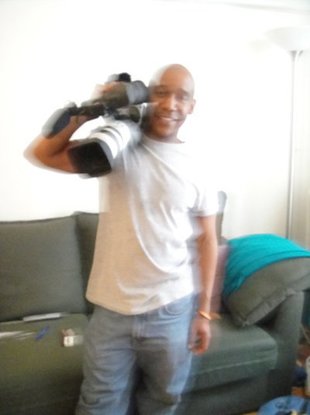 Video is more and more a huge part of the storytelling process for fundraisers. It's a great way to communicate the impact of philanthropy in the world. But, most fundraisers aren't video professionals. Once you have your video done, what are the best practices to get your constituents to watch it? I asked my friend and colleague, Ndlela Nkobi, that question. Here are his 5 best tips for getting your message seen! Enjoy! -- Jessica Cloud, CFRE Congratulations on finishing your organization’s video! After weeks (sometimes months) of planning, shooting, and editing, you have finally uploaded your film to YouTube. Now what? How do you make sure that your video gets the views it deserves and has its intended impact? Though there are no guaranteed ways of making your video go viral, here are some steps to make sure the people who need to see the video actually see it, watch it and take action. 1. Reinforce Your Call to Action Videos are generally created to get people to take some action (sign a petition, donating, joining a mailing list . . .) and your call to action in your video is where you ask your audience to take that action. Make sure you reinforce that call to action whenever you get a chance (your website, YouTube, your platforms). The ultimate success of your video will be based on how many people take you up on your call to action. 2. Have a Great Thumbnail Pick an engaging still image to give your audience a quick snapshot of your video. That thumbnail is also the image that is generally automatically used when the video is shared on social media and on platforms like WordPress. Consider creating a custom thumbnail that could also includes words that would further draw the viewer in. 3. Pay Attention to your YouTube Descriptions, Titles, Tags The title, description and tags you use on YouTube will not only help people find your video when they search for related content but they should also draw people in to watch the video. Not everyone is going to see the video on your website so give your viewer all the information they need to take the next step in your video description. 4. Place Video on Your Website Placing your video on your website gives you much more control over how the video is presented to viewers with things like the call to action, video placement and supporting text/images/graphics. 5. Promote the Video on Your Platforms Once the video is ready on YouTube and on your website, share it widely on your various platforms (Facebook, Twitter, mailing lists, . . . ) Your platforms will be one of the main ways that the people in your community find out about your video. Don’t be afraid to repost content (especially on social media) to make sure as many people see your post as possible. Bonus action: Check Your Analytics Here is another area where you get to define what success looks like for your video (or campaign). Whether you are looking at Google Analytics or YouTube analytics (ideally you are doing both) this is where you get to see how successful you were with things like page views, videos views and how long people are looking at your video. It is also important to look at engagement (likes, shares, comments . . .) Analytics and engagement are matrices you use to help you plan for the next videos you are working on producing. About the author: Ndlela Nkobi is a filmmaker and online video content creator based in New York City and Johannesburg. He works with small businesses, nonprofits, consultants and artists to connect with their clients through the use of video. You can see his work at ndlela.tv. Ndlela Nkobi has worked for Center for New Media Teaching and Learning (Columbia University) and Third Sector New England (Boston, MA). He has worked with Center for Environmental Research and Conservation (Columbia University), New York City Department of Education, Nonprofit Consultants Network (Boston, MA) and Starr King School for the Ministry (Berkeley, CA). Hi readers, I hope you enjoyed this guest post. Do you have additional tips for how to get the most reach on promotional videos? Comments and questions are, as always, welcomed and encouraged! Cheers, Jessica Cloud PS - If you liked this post, you might also like these:
PPS - If you found this article helpful, please comment and let me know. Also subscribe to Real Deal Fundraising so you don't miss a post! You'll get my guide to Call Center Games for Free! |
Jessica Cloud, CFREI've been called the Tasmanian Devil of fundraising and I'm here to talk shop with you. Archives
June 2024
Categories
All
|
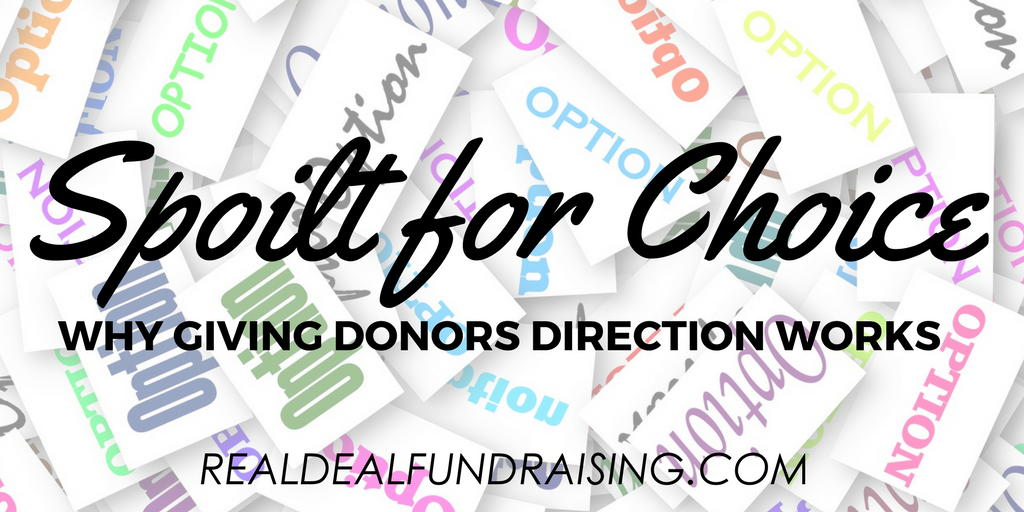
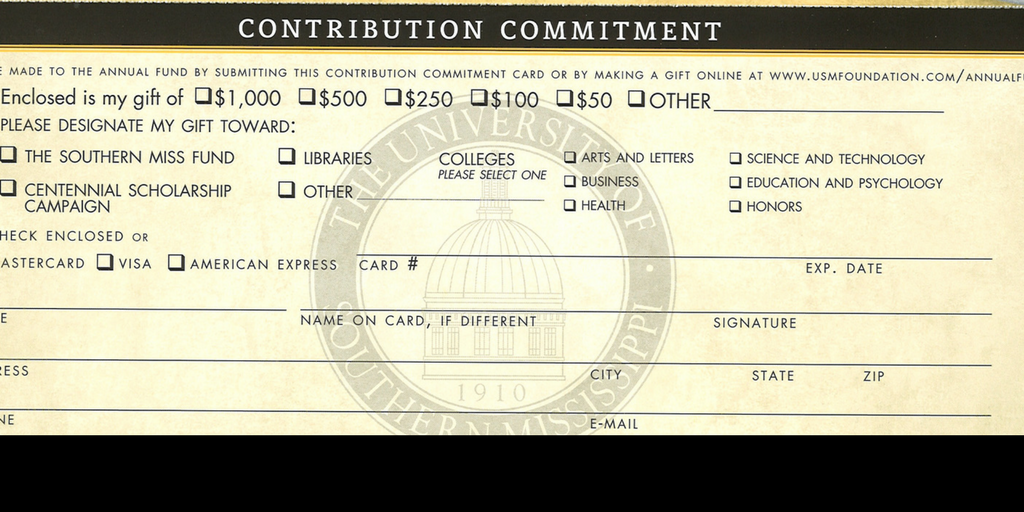
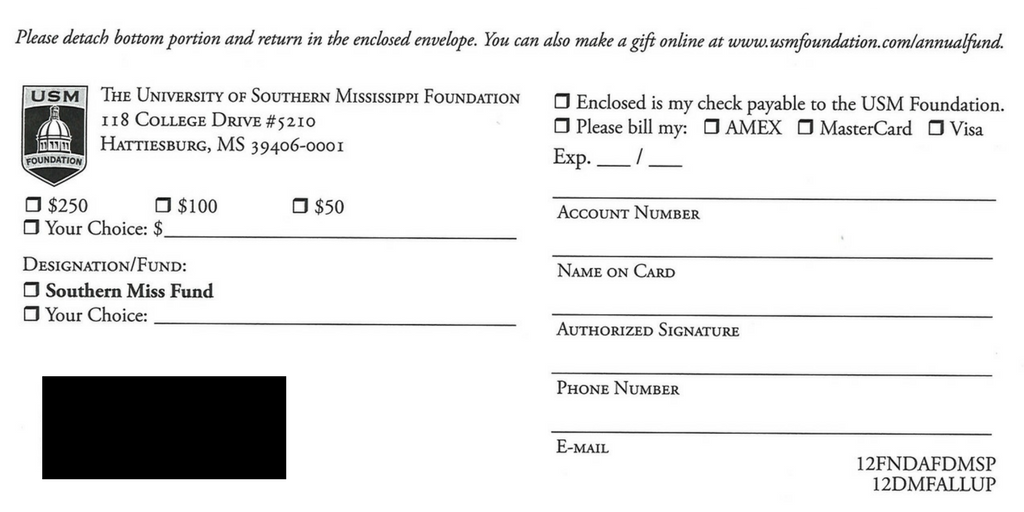
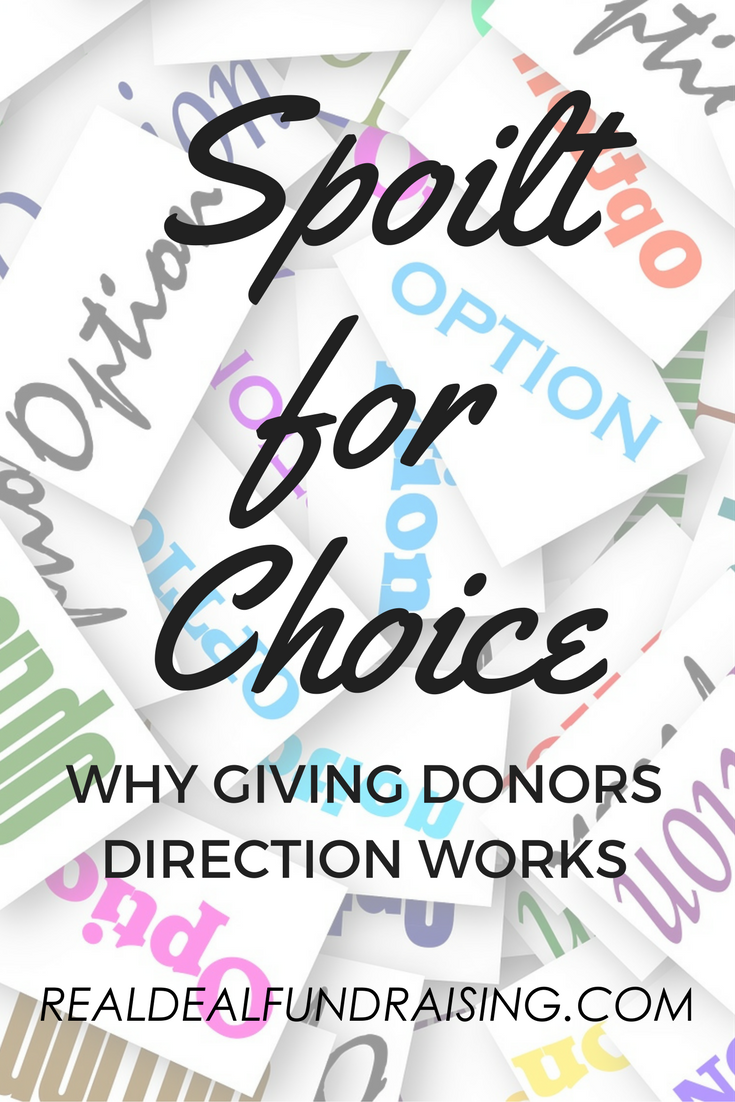
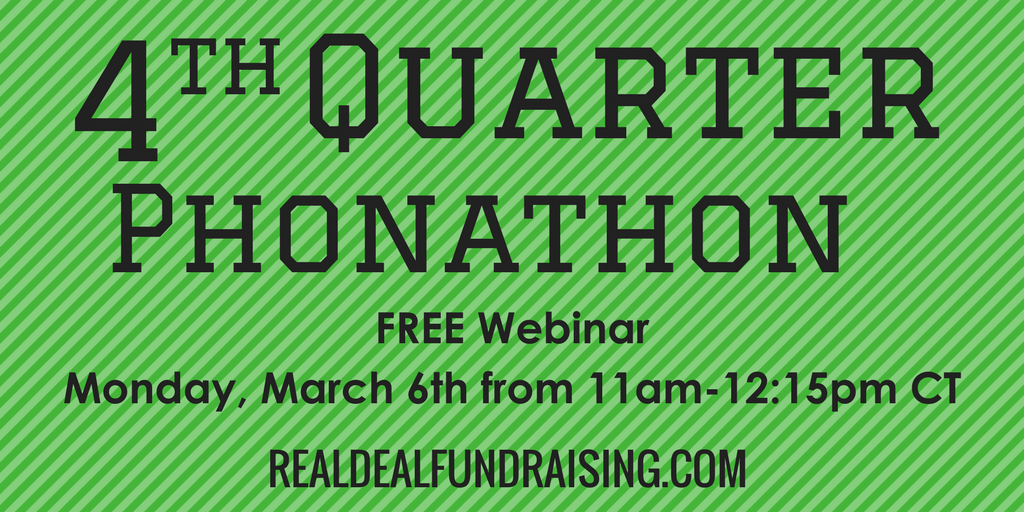

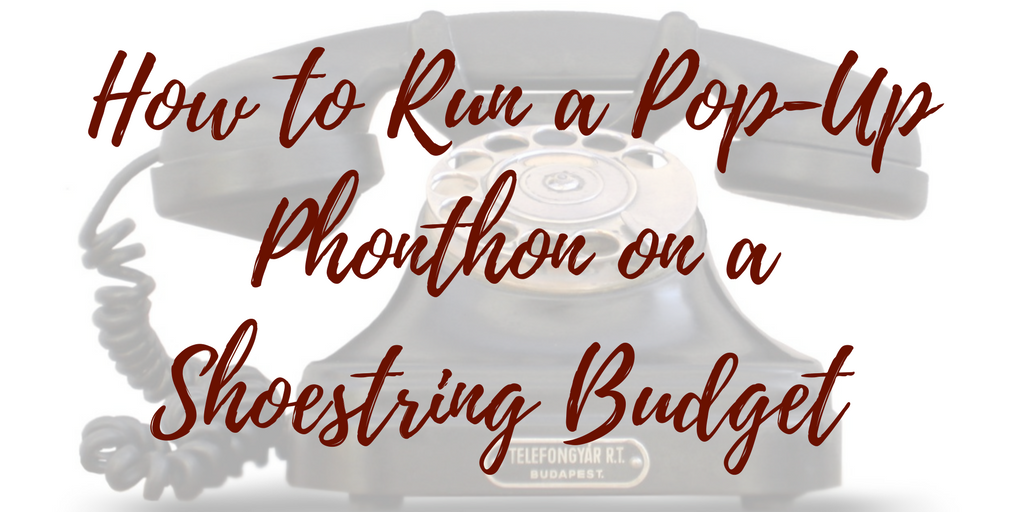


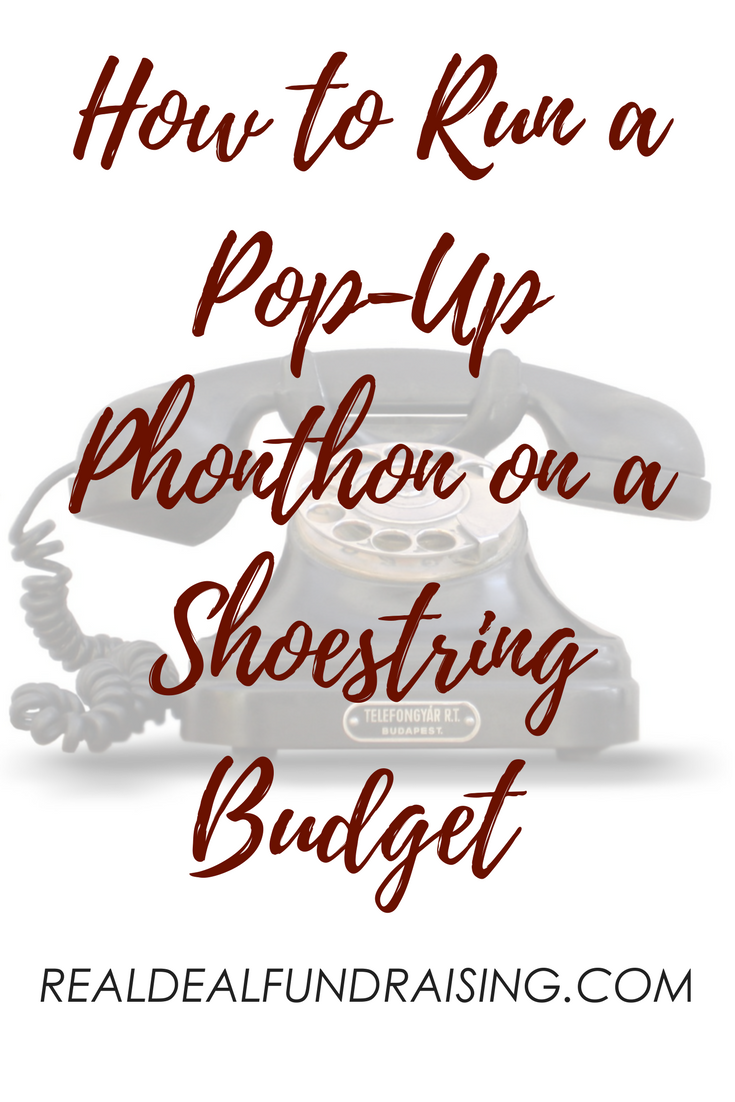


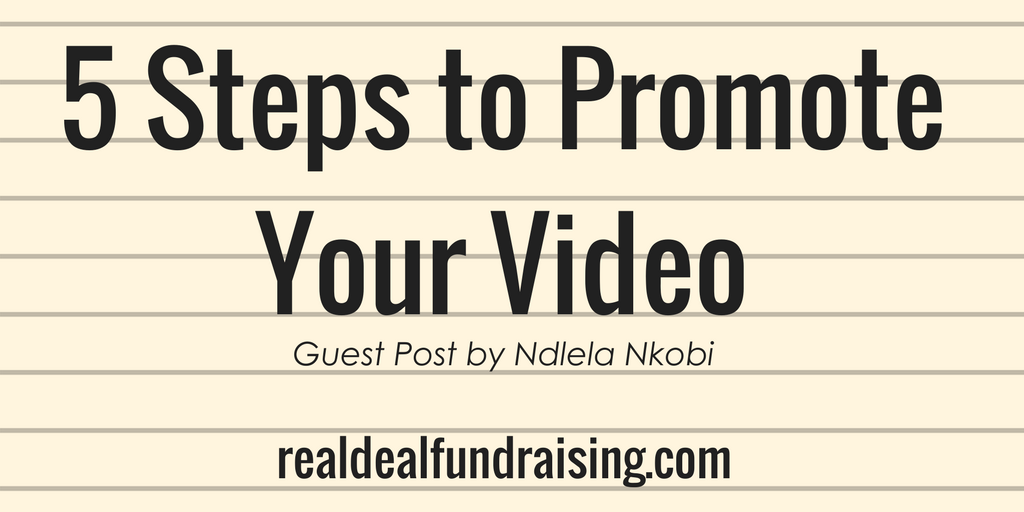
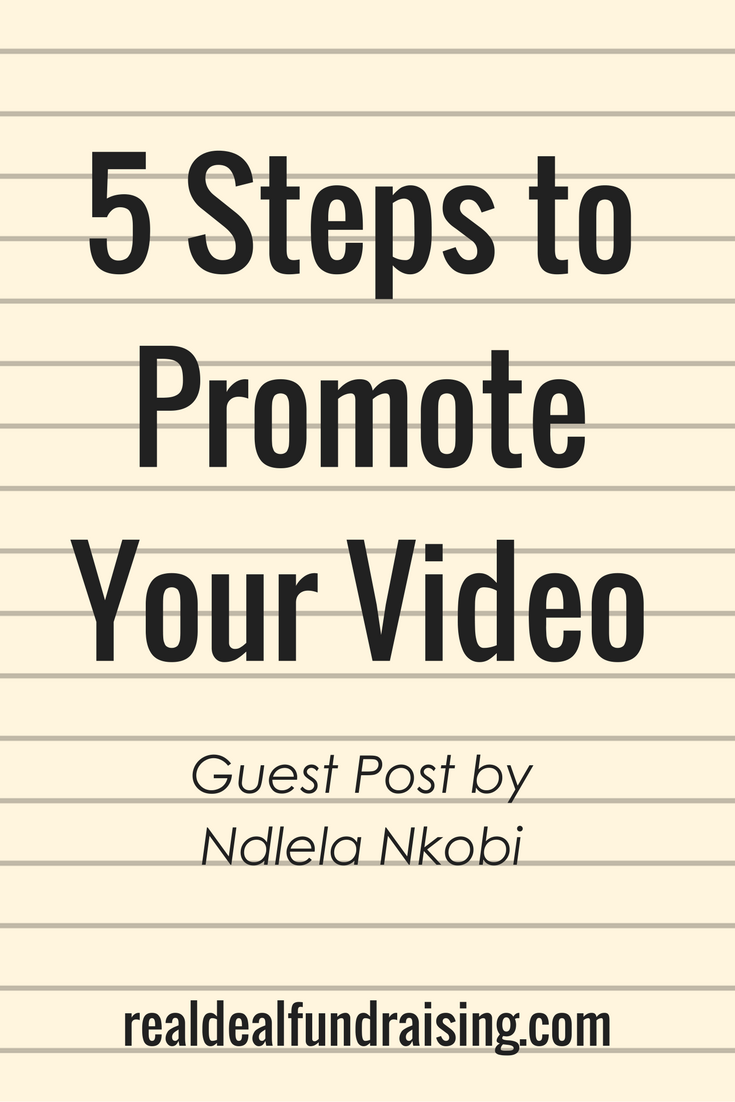

 RSS Feed
RSS Feed
